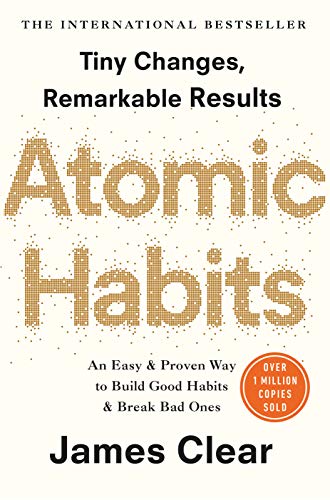“Atomic Habits” by James Clear is a groundbreaking book that deep dives into the science of habit formation and presents practical strategies to help individuals transform their lives. Clear’s insights, supported by real-life examples and scientific research, provide a comprehensive guide to harnessing the power of small habits for significant personal growth. In this article, we present a 10-point summary that encapsulates the essence of “Atomic Habits.”
1. The Power of Atomic Habits:
Clearly introduces the concept of “atomic habits,” emphasizing that significant change results from small, consistent actions over time. He explains that these minute habits when compounded, have the potential to yield remarkable outcomes.
2. The Habit Loop:
Drawing from Charles Duhigg’s model, Clear breaks down the habit loop into four stages: cue, craving, response, and reward. He highlights the importance of understanding these stages to effectively modify or create habits.
3. The 1% Rule:
Clearly introduces the concept of the “1% Rule,” asserting that aiming for just a 1% improvement in various areas of life can lead to substantial progress over time. This approach makes change less overwhelming and more sustainable.
4. Habit Stacking:
To establish new habits, Clear suggests utilizing the “habit stacking” technique, where a new habit is anchored to an existing one. This strategy leverages the brain’s association capabilities to make forming new habits easier.
5. The Role of Environment:
Clear underscores the influence of the environment on habit formation. He discusses how tweaking the surroundings can make desired behaviors more attractive and undesirable ones less tempting.
6. Make It Obvious:
One of the core principles of habit formation is making the desired behavior obvious. Clear advocates for using cues that trigger the intended action, ensuring that the habit is front and center in daily life.
7. Make It Attractive:
Clear explores the concept of making habits attractive by associating them with pleasurable experiences. He advises employing the “two-minute rule,” which involves starting a habit with an action that takes less than two minutes to complete.
8. Make It Easy:
The easier a habit is to accomplish, the more likely it is to stick. Clear discusses simplifying the process by reducing friction and creating an environment where the desired behavior is the path of least resistance.
9. Make It Satisfying:
To reinforce positive habits, Clear emphasizes the importance of instant gratification. He suggests creating a sense of accomplishment through immediate rewards, fostering a positive feedback loop.
10. The Power of Identity:
Clear explores the transformative impact of linking habits to one’s identity. By aligning with a desired identity, individuals are more motivated to maintain habits that reflect who they aspire to be.
“Atomic Habits” offers readers a roadmap for personal transformation by emphasizing the significance of small, consistent actions. James Clear’s insights draw from psychology, neuroscience, and real-world examples, making the book a comprehensive guide to understanding and mastering the art of habit formation. By applying the principles of making habits obvious, attractive, easy, and satisfying, readers can embark on a journey of profound self-improvement. The book underscores the notion that change is not about radical overhauls but about making tiny changes that, over time, accumulate into monumental progress. As the “1% Rule” suggests, even the smallest shifts in habits can yield remarkable transformations, making “Atomic Habits” a powerful tool for anyone seeking to unleash their full potential.
Please note that this is a very condensed version of the book’s themes and messages. “Atomic Habits” is a comprehensive guide that delves deeply into these points, offering practical advice and personal anecdotes to support the concepts presented. If you’re interested in learning more, I recommend reading the book itself.



